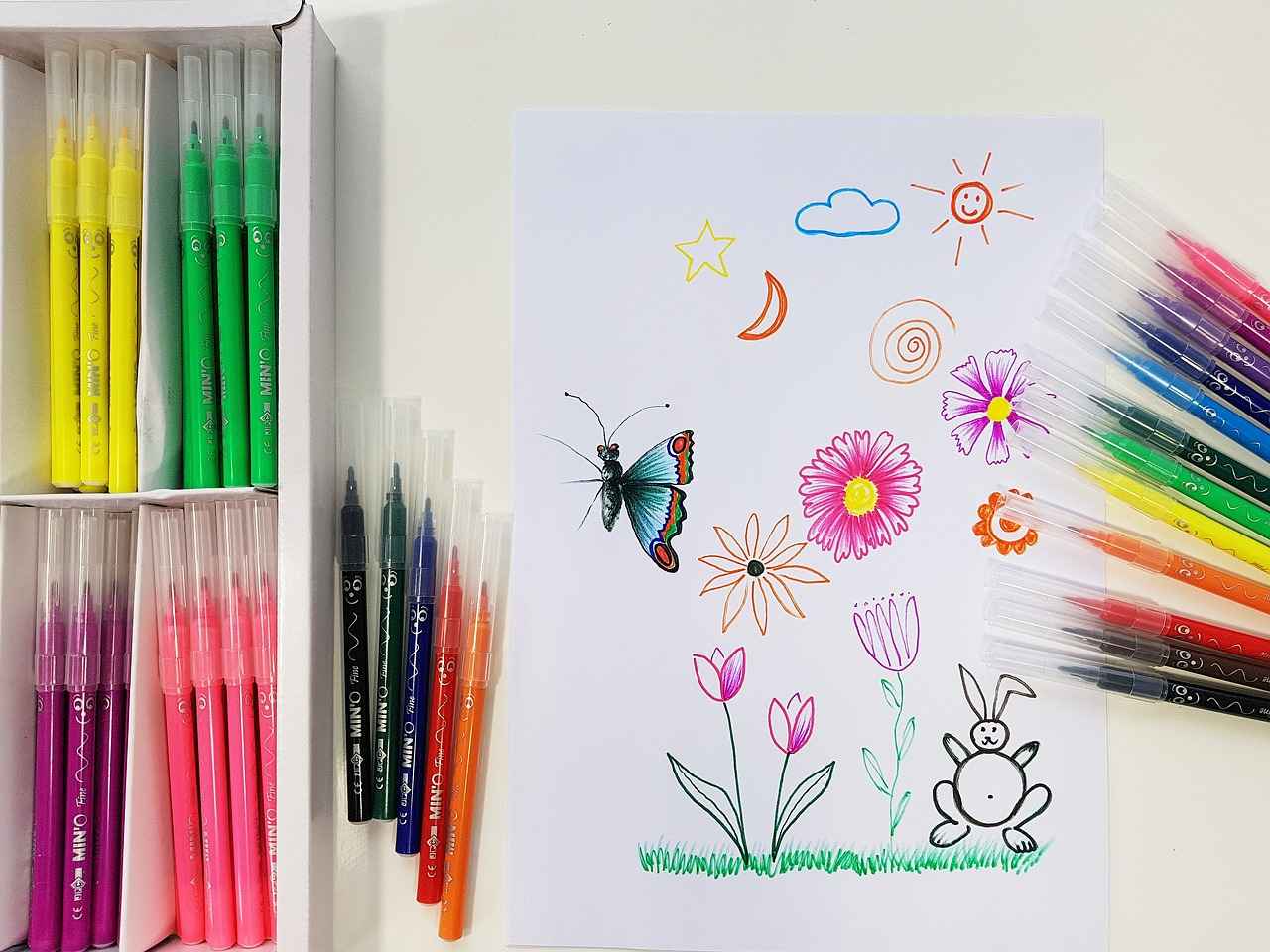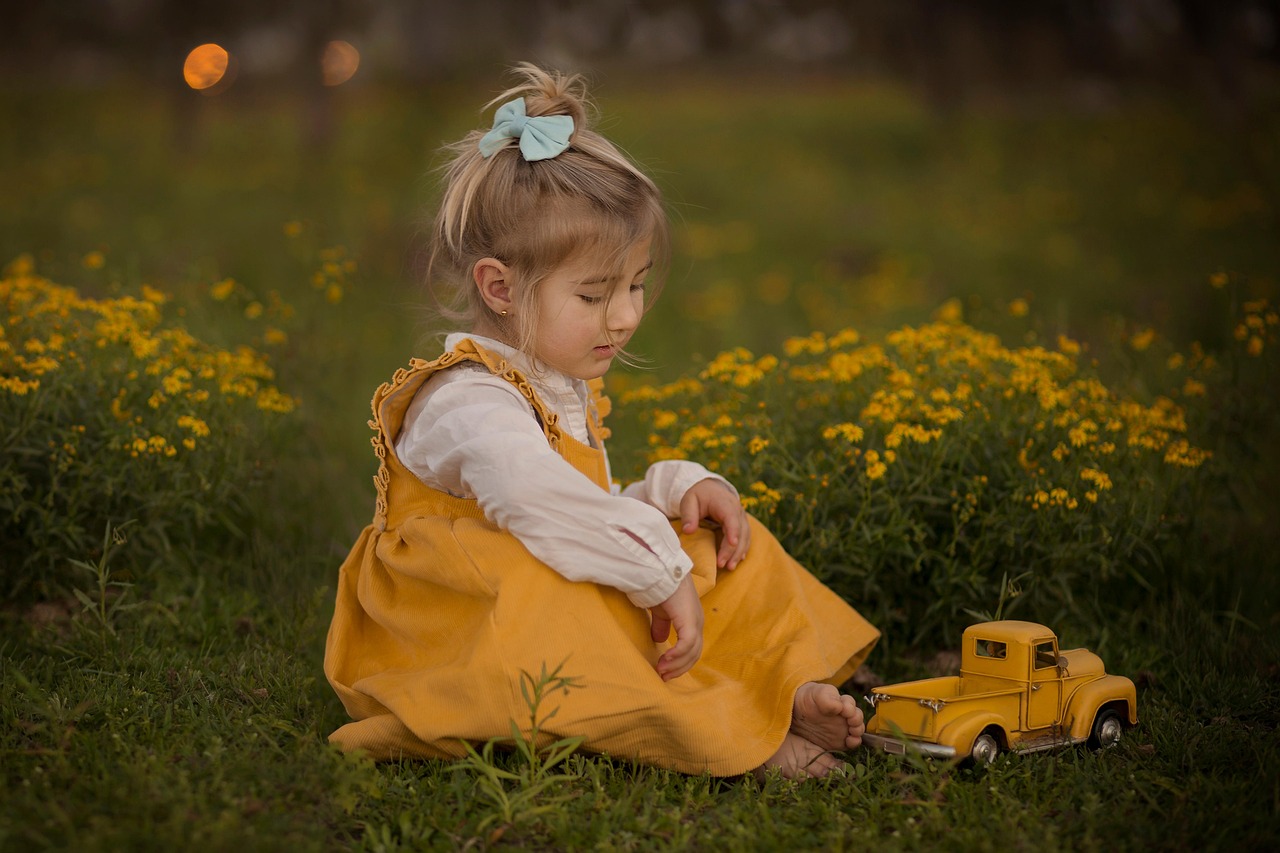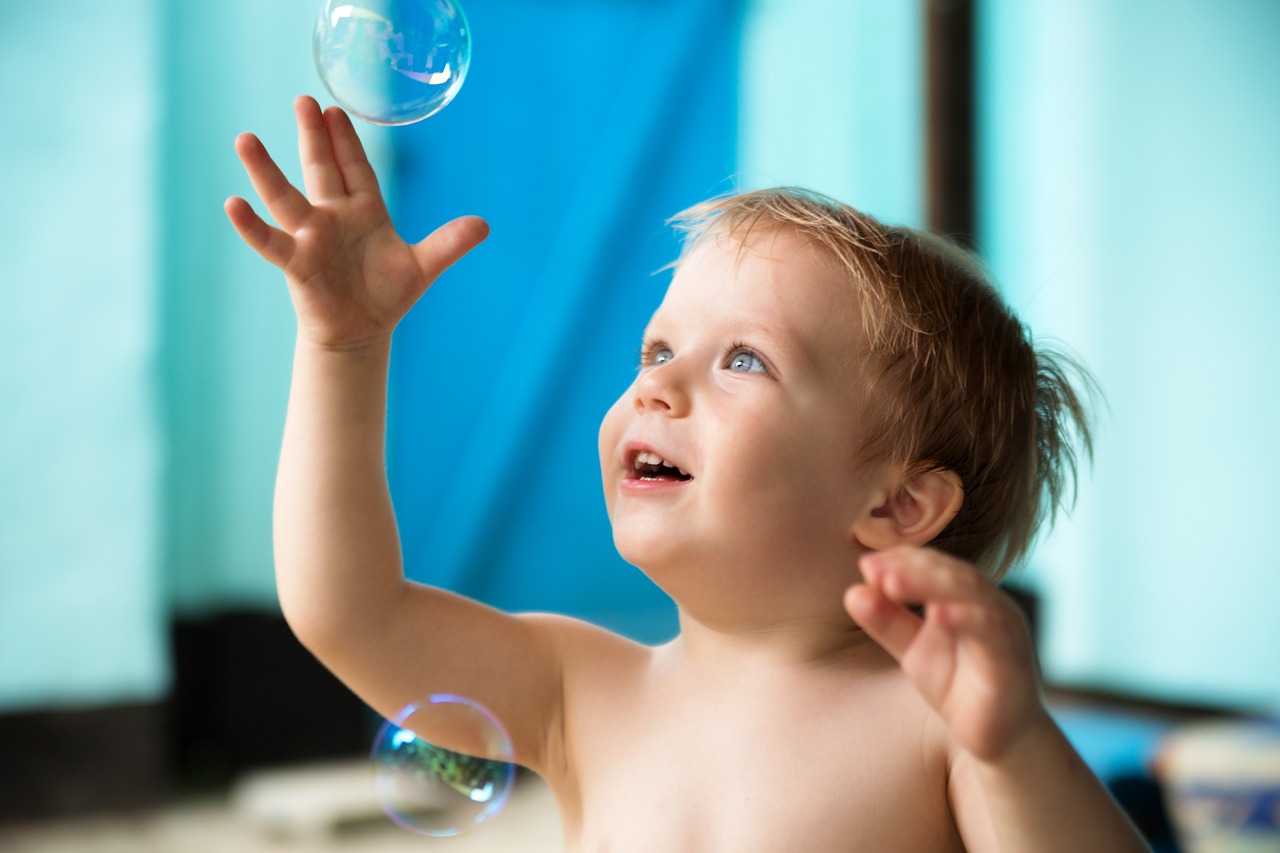This article delves into the fascinating world of cinema and its ability to help children grasp and articulate their emotions. By exploring various films, we can uncover how storytelling serves as a powerful tool for enhancing emotional intelligence in young audiences.
The Importance of Emotional Intelligence in Childhood
Emotional intelligence is vital for a child’s growth. It equips them with the skills to manage their emotions, empathize with others, and build stronger relationships. As children learn to express their feelings, they foster resilience and improve their mental health.
Top Movies That Teach Kids About Emotions
Several films tackle emotional themes, providing relatable scenarios for children. Below are some notable movies that effectively communicate messages about feelings and emotional expression.
- Inside Out: This innovative film personifies emotions, offering insights into the complexity of feelings. It sparks conversations about sadness, joy, and the significance of embracing all emotions.
- Finding Nemo: This classic addresses fear and anxiety, teaching children the importance of confronting challenges and relying on family support during tough times.
How Animation Helps Convey Complex Emotions
Animation serves as a remarkable medium for expressing intricate emotions. Through vibrant visuals and engaging narratives, animated films simplify complex emotional concepts, making them accessible for children.
The Use of Color and Music in Emotional Storytelling
Color palettes and musical compositions play crucial roles in conveying emotions. These elements enhance children’s understanding of feelings, creating a deeper emotional connection to the story.
Creating Empathy Through Relatable Characters
Characters that resonate with young viewers foster empathy. By connecting with these emotional journeys, children can better comprehend their own feelings and experiences.
Discussion Questions for Parents and Educators
Engaging children in conversations about the emotions depicted in films can enrich their understanding. Here are some thought-provoking questions:
- What emotion did you relate to the most in the film?
- How did the characters handle their feelings?
Activities to Reinforce Emotional Learning After Watching Films
Post-viewing activities can solidify emotional lessons. Suggestions include:
- Drawing their favorite character and describing their feelings.
- Creating a feelings chart based on the film.
Conclusion: The Lasting Impact of Films on Emotional Development
Films are invaluable resources for teaching children about emotions. By navigating feelings through cinematic storytelling, children can cultivate emotional intelligence that will serve them throughout their lives.

The Importance of Emotional Intelligence in Childhood
Emotional intelligence plays a vital role in the development of children, influencing their ability to understand and manage their emotions effectively. This skill not only aids in navigating social interactions but also enhances their capacity to empathize with others. As children learn to recognize and articulate their feelings, they are better equipped to form healthy relationships and maintain positive mental well-being.
By cultivating emotional intelligence, children can develop a strong sense of self-awareness. This self-awareness allows them to identify their emotions and understand how these feelings impact their behavior and interactions with others. For instance, when a child feels frustrated, recognizing this emotion can help them communicate their needs instead of resorting to negative actions such as tantrums or withdrawal.
Furthermore, emotional intelligence fosters empathy. When children learn to put themselves in someone else’s shoes, they become more compassionate and understanding. This is particularly important in today’s diverse society, where children encounter various perspectives and experiences. By teaching children to appreciate differences and respond with kindness, we prepare them for a world that values inclusivity and respect.
In addition, emotional intelligence contributes to better problem-solving skills. When children are equipped to manage their emotions, they can approach conflicts calmly and rationally. This ability not only helps them resolve disputes with peers but also lays the groundwork for effective communication in their future personal and professional relationships.
Ultimately, investing in the development of emotional intelligence in childhood is crucial. It paves the way for improved mental health, stronger relationships, and a more profound understanding of oneself and others. As parents and educators, fostering this skill can lead to a generation that is not only emotionally aware but also equipped to thrive in an ever-changing world.

Top Movies That Teach Kids About Emotions
Films have an incredible ability to resonate with audiences, especially children, by addressing emotional themes that they can relate to. These movies not only entertain but also provide essential lessons about feelings and emotional expression. Below, we explore a selection of remarkable films that effectively convey important messages about emotions.
- Inside Out: This animated masterpiece takes viewers on a journey through the mind of a young girl named Riley. The film personifies her emotions—Joy, Sadness, Anger, Fear, and Disgust—offering a unique perspective on how these feelings interact and shape her experiences. It emphasizes the value of embracing all emotions, including sadness, as a vital part of life.
- Finding Nemo: A heartwarming tale of adventure and perseverance, this film explores themes of fear and anxiety as Marlin, a clownfish, searches for his son, Nemo. The story teaches children about confronting their fears and the importance of support from friends and family during challenging times.
- Frozen: This popular film showcases the power of love and the importance of understanding one’s emotions. The bond between sisters Anna and Elsa highlights how love can help overcome fear and isolation, encouraging children to express their feelings openly.
- Wreck-It Ralph: This film addresses self-acceptance and the struggle of feeling like an outsider. Ralph, a villain who wants to be a hero, learns about friendship and the importance of being true to oneself, making it a relatable story for many children.
These films not only entertain but also serve as valuable tools for teaching children about the complexities of emotions. By engaging with these stories, kids can learn to identify and express their feelings in a healthy way, fostering their emotional intelligence.
In conclusion, movies are a powerful medium for helping children navigate their emotional landscapes. Through relatable characters and engaging narratives, these films provide essential lessons that can significantly impact children’s understanding of their feelings.
Inside Out: A Journey Through Emotions
Introduction: The animated film Inside Out offers a unique perspective on emotions, making it an excellent tool for children to understand their feelings. By personifying emotions, the film allows viewers to explore complex emotional landscapes in a relatable manner.
The Importance of Understanding Emotions: Emotional intelligence is vital for children as it helps them navigate social interactions and fosters empathy. Inside Out effectively illustrates this by showcasing how different emotions interact and influence behavior.
| Character | Emotion |
|---|---|
| Joy | Happiness |
| Sadness | Grief |
| Anger | Frustration |
| Fear | Anxiety |
| Disgust | Aversion |
Character Analysis: Each character in Inside Out represents a distinct emotion. This portrayal helps children relate to their own feelings, encouraging them to express and accept their emotions. For instance, Joy’s journey emphasizes the importance of embracing all emotions, including sadness.
The Role of Memories: The film also highlights how memories shape our emotional responses. By understanding this connection, children can recognize the impact of their own experiences on their feelings.
Conclusion: Inside Out serves as a powerful educational tool for teaching children about emotions. By engaging with the film’s characters and storyline, children can develop a deeper understanding of their own emotional experiences, fostering emotional intelligence that benefits them throughout their lives.
Inside Out
Movie About Feelings for Kids: Learning to Express Emotions Through Film
This article explores how films can help children understand and express their emotions, providing insights into various movies that effectively tackle themes of feelings and emotional intelligence.
The Importance of Emotional Intelligence in Childhood
Emotional intelligence is crucial for children’s development. It helps them navigate social interactions and enhances their ability to empathize with others, leading to healthier relationships and improved mental well-being.
Top Movies That Teach Kids About Emotions
Numerous films address emotional themes, offering relatable experiences for children. Below are some of the best movies that effectively convey messages about feelings and emotional expression.
- Inside Out: A Journey Through Emotions
is a groundbreaking film that personifies emotions, allowing children to understand the complexity of feelings. It encourages discussions about sadness, joy, and the importance of accepting all emotions.
- Character Analysis: Joy, Sadness, Anger, Fear, and Disgust
Each character in represents a different emotion, showcasing how they interact and influence Riley’s life. This analysis helps children relate to their own feelings and experiences.
- The Role of Memories in Emotional Development
The film illustrates how memories shape our emotional landscape. Understanding this concept can help children recognize the significance of their own memories in influencing their feelings.
- Finding Nemo: Overcoming Fear and Anxiety
Finding Nemo addresses themes of fear, anxiety, and the importance of perseverance. It teaches children how to confront their fears and the value of support from loved ones during difficult times.
How Animation Helps Convey Complex Emotions
Animation is a powerful medium for expressing emotions. It simplifies complex emotional concepts, making them accessible and relatable for children.
- The Use of Color and Music in Emotional Storytelling
Color schemes and musical scores play a significant role in conveying emotions in films. These elements enhance children’s understanding of feelings.
- Creating Empathy Through Relatable Characters
Relatable characters in animated films foster empathy among young viewers. Children connect with characters’ emotional journeys, helping them understand their own feelings.
Discussion Questions for Parents and Educators
Engaging children in discussions about emotions portrayed in films can deepen their understanding. Here are some thought-provoking questions:
- What emotions did you see in the movie?
- How did the characters handle their feelings?
Activities to Reinforce Emotional Learning After Watching Films
Post-film activities can enhance emotional learning. Suggested activities include:
- Drawing a favorite scene and discussing the emotions involved.
- Role-playing different emotional scenarios.
Conclusion: The Lasting Impact of Films on Emotional Development
Films are a valuable tool for teaching children about emotions. By exploring feelings through storytelling, children can develop emotional intelligence that will benefit them throughout their lives.
is a groundbreaking film that personifies emotions, allowing children to understand the complexity of feelings. It encourages discussions about sadness, joy, and the importance of accepting all emotions.
Movie About Feelings for Kids: Learning to Express Emotions Through Film
This article explores how films can help children understand and express their emotions, providing insights into various movies that effectively tackle themes of feelings and emotional intelligence.
The Importance of Emotional Intelligence in Childhood
Emotional intelligence is crucial for children’s development. It helps them navigate social interactions and enhances their ability to empathize with others, leading to healthier relationships and improved mental well-being.
Top Movies That Teach Kids About Emotions
- Inside Out: A Journey Through Emotions
- Character Analysis: Joy, Sadness, Anger, Fear, and Disgust
- The Role of Memories in Emotional Development
- Finding Nemo: Overcoming Fear and Anxiety
Inside Out is a groundbreaking film that personifies emotions, allowing children to understand the complexity of feelings. It encourages discussions about sadness, joy, and the importance of accepting all emotions.
Each character in Inside Out represents a different emotion, showcasing how they interact and influence Riley’s life. This analysis helps children relate to their own feelings and experiences.
The film illustrates how memories shape our emotional landscape. Understanding this concept can help children recognize the significance of their own memories in influencing their feelings.
Finding Nemo addresses themes of fear, anxiety, and the importance of perseverance. It teaches children how to confront their fears and the value of support from loved ones during difficult times.
How Animation Helps Convey Complex Emotions
Animation is a powerful medium for expressing emotions. This section discusses how animated films simplify complex emotional concepts, making them accessible and relatable for children.
- The Use of Color and Music in Emotional Storytelling
- Creating Empathy Through Relatable Characters
Color schemes and musical scores play a significant role in conveying emotions in films. This analysis shows how these elements enhance children’s understanding of feelings.
Relatable characters in animated films foster empathy among young viewers. This section explores how children connect with characters’ emotional journeys, helping them understand their own feelings.
Discussion Questions for Parents and Educators
Engaging children in discussions about emotions portrayed in films can deepen their understanding. This section provides thought-provoking questions for parents and educators to facilitate meaningful conversations.
Activities to Reinforce Emotional Learning After Watching Films
Post-film activities can enhance emotional learning. This section suggests interactive activities that parents and educators can use to reinforce the lessons learned from the films.
Conclusion: The Lasting Impact of Films on Emotional Development
Films are a valuable tool for teaching children about emotions. By exploring feelings through storytelling, children can develop emotional intelligence that will benefit them throughout their lives.
Character Analysis: Joy, Sadness, Anger, Fear, and Disgust
In the film Inside Out, each character embodies a distinct emotion, allowing children to grasp the nuanced nature of feelings. This unique portrayal offers valuable insights into how emotions influence behavior and decision-making in daily life.
| Character | Emotion | Key Traits | Lessons Learned |
|---|---|---|---|
| Joy | Joy | Optimistic, energetic, and enthusiastic | Joy teaches the importance of positivity and embracing happy moments, but also highlights that it’s okay to feel sad sometimes. |
| Sadness | Sadness | Thoughtful, reflective, and empathetic | Sadness shows that acknowledging and expressing sorrow is crucial for emotional health and can lead to deeper connections with others. |
| Anger | Anger | Passionate, assertive, and protective | Anger illustrates the importance of standing up for oneself and addressing injustices, while also teaching the need for control and understanding. |
| Fear | Fear | Cautious, alert, and protective | Fear emphasizes the role of caution in keeping us safe but also encourages overcoming irrational fears to grow and explore. |
| Disgust | Disgust | Judgmental, discerning, and protective | Disgust teaches the importance of boundaries and personal preferences, helping children understand what makes them comfortable or uncomfortable. |
Through the interactions of these characters, children learn that all emotions have value and play a significant role in shaping their experiences. The film encourages young viewers to accept their feelings and understand that it’s natural to experience a range of emotions throughout life.
By engaging with these characters, children can better relate to their own feelings and develop emotional intelligence, which is essential for their overall growth and well-being.
Inside Out
Movie About Feelings for Kids: Learning to Express Emotions Through Film
This article explores how films can help children understand and express their emotions, providing insights into various movies that effectively tackle themes of feelings and emotional intelligence.
The Importance of Emotional Intelligence in Childhood
Emotional intelligence is crucial for children’s development. It helps them navigate social interactions and enhances their ability to empathize with others, leading to healthier relationships and improved mental well-being.
Top Movies That Teach Kids About Emotions
Numerous films address emotional themes, offering relatable experiences for children. This section highlights some of the best movies that effectively convey messages about feelings and emotional expression.
Inside Out: A Journey Through Emotions
is a groundbreaking film that personifies emotions, allowing children to understand the complexity of feelings. It encourages discussions about sadness, joy, and the importance of accepting all emotions.
Character Analysis: Joy, Sadness, Anger, Fear, and Disgust
Each character in represents a different emotion, showcasing how they interact and influence Riley’s life. This analysis helps children relate to their own feelings and experiences.
The Role of Memories in Emotional Development
The film illustrates how memories shape our emotional landscape. Understanding this concept can help children recognize the significance of their own memories in influencing their feelings.
Finding Nemo: Overcoming Fear and Anxiety
Finding Nemo addresses themes of fear, anxiety, and the importance of perseverance. It teaches children how to confront their fears and the value of support from loved ones during difficult times.
How Animation Helps Convey Complex Emotions
Animation is a powerful medium for expressing emotions. This section discusses how animated films simplify complex emotional concepts, making them accessible and relatable for children.
The Use of Color and Music in Emotional Storytelling
Color schemes and musical scores play a significant role in conveying emotions in films. This analysis shows how these elements enhance children’s understanding of feelings.
Creating Empathy Through Relatable Characters
Relatable characters in animated films foster empathy among young viewers. This section explores how children connect with characters’ emotional journeys, helping them understand their own feelings.
Discussion Questions for Parents and Educators
Engaging children in discussions about emotions portrayed in films can deepen their understanding. This section provides thought-provoking questions for parents and educators to facilitate meaningful conversations.
Activities to Reinforce Emotional Learning After Watching Films
Post-film activities can enhance emotional learning. This section suggests interactive activities that parents and educators can use to reinforce the lessons learned from the films.
Conclusion: The Lasting Impact of Films on Emotional Development
Films are a valuable tool for teaching children about emotions. By exploring feelings through storytelling, children can develop emotional intelligence that will benefit them throughout their lives.
represents a different emotion, showcasing how they interact and influence Riley’s life. This analysis helps children relate to their own feelings and experiences.
Movie About Feelings for Kids: Learning to Express Emotions Through Film
This article explores how films can help children understand and express their emotions, providing insights into various movies that effectively tackle themes of feelings and emotional intelligence.
The Importance of Emotional Intelligence in Childhood
Emotional intelligence is crucial for children’s development. It helps them navigate social interactions and enhances their ability to empathize with others, leading to healthier relationships and improved mental well-being.
Top Movies That Teach Kids About Emotions
Numerous films address emotional themes, offering relatable experiences for children. Below are some of the best movies that effectively convey messages about feelings and emotional expression.
- Inside Out: A Journey Through Emotions
Inside Out is a groundbreaking film that personifies emotions, allowing children to understand the complexity of feelings. It encourages discussions about sadness, joy, and the importance of accepting all emotions.
- Character Analysis: Joy, Sadness, Anger, Fear, and Disgust
Each character in Inside Out represents a different emotion, showcasing how they interact and influence Riley’s life. This analysis helps children relate to their own feelings and experiences.
- The Role of Memories in Emotional Development
The film illustrates how memories shape our emotional landscape. Understanding this concept can help children recognize the significance of their own memories in influencing their feelings.
- Finding Nemo: Overcoming Fear and Anxiety
Finding Nemo addresses themes of fear, anxiety, and the importance of perseverance. It teaches children how to confront their fears and the value of support from loved ones during difficult times.
How Animation Helps Convey Complex Emotions
Animation is a powerful medium for expressing emotions. This section discusses how animated films simplify complex emotional concepts, making them accessible and relatable for children.
- The Use of Color and Music in Emotional Storytelling
Color schemes and musical scores play a significant role in conveying emotions in films. This analysis shows how these elements enhance children’s understanding of feelings.
- Creating Empathy Through Relatable Characters
Relatable characters in animated films foster empathy among young viewers. This section explores how children connect with characters’ emotional journeys, helping them understand their own feelings.
Discussion Questions for Parents and Educators
Engaging children in discussions about emotions portrayed in films can deepen their understanding. Below are thought-provoking questions for parents and educators to facilitate meaningful conversations.
- What emotions did you feel while watching the movie?
- How did the characters express their feelings?
- Can you relate to any of the characters? Why?
Activities to Reinforce Emotional Learning After Watching Films
Post-film activities can enhance emotional learning. Below are interactive activities that parents and educators can use to reinforce the lessons learned from the films.
- Draw your favorite character and describe their emotions.
- Role-play a scene from the movie and discuss the emotions involved.
- Create a feelings chart based on the movie’s events.
Conclusion: The Lasting Impact of Films on Emotional Development
Films are a valuable tool for teaching children about emotions. By exploring feelings through storytelling, children can develop emotional intelligence that will benefit them throughout their lives.
The Role of Memories in Emotional Development
The film Inside Out profoundly illustrates how our memories play a pivotal role in shaping our emotional landscape. Each memory we create is like a thread woven into the fabric of our emotional experiences, influencing how we feel in various situations. For children, understanding this concept is essential as it helps them recognize the significance of their own memories in influencing their feelings.
Memories are not just recollections of past events; they are the building blocks of our emotional responses. When children reflect on their memories, they can better understand why certain feelings arise in specific contexts. For instance, recalling a joyful birthday party can evoke feelings of happiness, while a memory of a sad moment may bring about feelings of grief. This recognition is crucial for emotional intelligence development.
Moreover, the film encourages children to embrace all emotions, not just the positive ones. By illustrating how memories can trigger a range of feelings—from joy and excitement to sadness and fear—Inside Out teaches children that it’s okay to feel a spectrum of emotions. This acceptance is vital for their emotional growth and resilience.
To further explore this concept, parents and educators can engage children in discussions about their own memories and the emotions associated with them. Questions like, “What is a happy memory you have?” or “How did you feel when something sad happened?” can help children articulate their feelings and understand their emotional responses better.
In conclusion, the role of memories in emotional development is significant. By recognizing how memories shape feelings, children can learn to navigate their emotions more effectively, leading to healthier emotional well-being.
Finding Nemo: Overcoming Fear and Anxiety
Finding Nemo is a beloved animated film that addresses the profound themes of fear and anxiety through an engaging storyline and relatable characters. This film not only entertains but also provides valuable lessons for children about overcoming their fears and the importance of perseverance.
The story follows Nemo, a young clownfish who is captured by a diver, prompting his father, Marlin, to embark on a daring journey across the ocean to rescue him. Throughout the film, Marlin faces numerous challenges that test his courage and resolve.
| Character | Emotion | Lesson Learned |
|---|---|---|
| Marlin | Fear | Confronting fears leads to growth. |
| Nemo | Anxiety | Bravery comes in many forms. |
| Dory | Optimism | Stay positive in tough times. |
The film effectively illustrates how fear can be a barrier to personal growth. Marlin’s overprotectiveness stems from his fear of losing Nemo, which ultimately teaches children that while fear is a natural emotion, it should not hinder their ability to explore and learn. Dory, with her optimistic outlook, serves as a counterbalance to Marlin’s fears, showing that a positive attitude can help navigate difficult situations.
In addition to the emotional journey of the characters, Finding Nemo emphasizes the importance of support from loved ones. Marlin’s determination to rescue Nemo showcases the lengths parents will go to for their children, while Nemo’s relationships with his friends highlight the value of companionship in overcoming obstacles.
In conclusion, Finding Nemo is more than just an entertaining tale; it is a powerful narrative that teaches children about confronting their fears and the significance of perseverance. Through its engaging characters and heartfelt storyline, the film encourages young viewers to embrace their emotions, fostering resilience and courage in the face of challenges.
Finding Nemo
Movie About Feelings for Kids: Learning to Express Emotions Through Film
This article explores how films can help children understand and express their emotions, providing insights into various movies that effectively tackle themes of feelings and emotional intelligence.
The Importance of Emotional Intelligence in Childhood
Emotional intelligence is crucial for children’s development. It helps them navigate social interactions and enhances their ability to empathize with others, leading to healthier relationships and improved mental well-being.
Top Movies That Teach Kids About Emotions
Numerous films address emotional themes, offering relatable experiences for children. This section highlights some of the best movies that effectively convey messages about feelings and emotional expression.
Inside Out: A Journey Through Emotions
Inside Out is a groundbreaking film that personifies emotions, allowing children to understand the complexity of feelings. It encourages discussions about sadness, joy, and the importance of accepting all emotions.
Character Analysis: Joy, Sadness, Anger, Fear, and Disgust
Each character in Inside Out represents a different emotion, showcasing how they interact and influence Riley’s life. This analysis helps children relate to their own feelings and experiences.
The Role of Memories in Emotional Development
The film illustrates how memories shape our emotional landscape. Understanding this concept can help children recognize the significance of their own memories in influencing their feelings.
Finding Nemo: Overcoming Fear and Anxiety
Finding Nemo addresses themes of fear, anxiety, and the importance of perseverance. It teaches children how to confront their fears and the value of support from loved ones during difficult times.
How Animation Helps Convey Complex Emotions
Animation is a powerful medium for expressing emotions. This section discusses how animated films simplify complex emotional concepts, making them accessible and relatable for children.
The Use of Color and Music in Emotional Storytelling
Color schemes and musical scores play a significant role in conveying emotions in films. This analysis shows how these elements enhance children’s understanding of feelings.
Creating Empathy Through Relatable Characters
Relatable characters in animated films foster empathy among young viewers. This section explores how children connect with characters’ emotional journeys, helping them understand their own feelings.
Discussion Questions for Parents and Educators
Engaging children in discussions about emotions portrayed in films can deepen their understanding. This section provides thought-provoking questions for parents and educators to facilitate meaningful conversations.
Activities to Reinforce Emotional Learning After Watching Films
Post-film activities can enhance emotional learning. This section suggests interactive activities that parents and educators can use to reinforce the lessons learned from the films.
Conclusion: The Lasting Impact of Films on Emotional Development
Films are a valuable tool for teaching children about emotions. By exploring feelings through storytelling, children can develop emotional intelligence that will benefit them throughout their lives.
addresses themes of fear, anxiety, and the importance of perseverance. It teaches children how to confront their fears and the value of support from loved ones during difficult times.
Movie About Feelings for Kids: Learning to Express Emotions Through Film
This article explores how films can help children understand and express their emotions, providing insights into various movies that effectively tackle themes of feelings and emotional intelligence.
The Importance of Emotional Intelligence in Childhood
Emotional intelligence is crucial for children’s development. It helps them navigate social interactions and enhances their ability to empathize with others, leading to healthier relationships and improved mental well-being.
Top Movies That Teach Kids About Emotions
- Inside Out: A Journey Through Emotions
- Finding Nemo: Overcoming Fear and Anxiety
Inside Out: A Journey Through Emotions
Inside Out is a groundbreaking film that personifies emotions, allowing children to understand the complexity of feelings. It encourages discussions about sadness, joy, and the importance of accepting all emotions.
Character Analysis: Joy, Sadness, Anger, Fear, and Disgust
Each character in Inside Out represents a different emotion, showcasing how they interact and influence Riley’s life. This analysis helps children relate to their own feelings and experiences.
The Role of Memories in Emotional Development
The film illustrates how memories shape our emotional landscape. Understanding this concept can help children recognize the significance of their own memories in influencing their feelings.
Finding Nemo: Overcoming Fear and Anxiety
Finding Nemo addresses themes of fear, anxiety, and the importance of perseverance. It teaches children how to confront their fears and the value of support from loved ones during difficult times.
How Animation Helps Convey Complex Emotions
Animation is a powerful medium for expressing emotions. This section discusses how animated films simplify complex emotional concepts, making them accessible and relatable for children.
The Use of Color and Music in Emotional Storytelling
Color schemes and musical scores play a significant role in conveying emotions in films. This analysis shows how these elements enhance children’s understanding of feelings.
Creating Empathy Through Relatable Characters
Relatable characters in animated films foster empathy among young viewers. This section explores how children connect with characters’ emotional journeys, helping them understand their own feelings.
Discussion Questions for Parents and Educators
Engaging children in discussions about emotions portrayed in films can deepen their understanding. This section provides thought-provoking questions for parents and educators to facilitate meaningful conversations.
Activities to Reinforce Emotional Learning After Watching Films
Post-film activities can enhance emotional learning. This section suggests interactive activities that parents and educators can use to reinforce the lessons learned from the films.
Conclusion: The Lasting Impact of Films on Emotional Development
Films are a valuable tool for teaching children about emotions. By exploring feelings through storytelling, children can develop emotional intelligence that will benefit them throughout their lives.
How Animation Helps Convey Complex Emotions
Animation serves as a dynamic medium that can vividly express a wide range of emotions. Through colorful visuals and engaging characters, animated films present complex emotional concepts in a way that is both accessible and relatable for children. This section delves into how animation simplifies these intricate ideas, making it easier for young audiences to grasp and understand their own feelings.
The Power of Visual Storytelling
One of the most significant advantages of animation is its ability to use visual storytelling to convey emotions. Characters in animated films often display exaggerated facial expressions and body language, which helps children identify and relate to various feelings. For example, a character’s bright smile can represent happiness, while drooping shoulders can indicate sadness. This visual cueing allows children to connect with the emotional states of characters, fostering empathy and understanding.
Symbolism Through Color
Color plays a vital role in emotional expression within animated films. Different colors can evoke specific feelings; for instance, blue often symbolizes sadness, while yellow represents joy. By using these color schemes effectively, animators can guide children’s emotional responses, helping them to recognize and articulate their own feelings. This use of color not only enhances the storytelling but also teaches children about the emotional significance behind different hues.
The Role of Music and Sound
In addition to visuals, music and sound significantly enhance emotional storytelling in animation. A poignant score can amplify feelings of joy, sadness, or tension, making scenes more impactful. For instance, a soft, gentle melody can accompany a moment of reflection, allowing children to feel the weight of the emotions being portrayed. This combination of sound and visuals creates a rich tapestry of emotional experience that resonates deeply with young viewers.
Creating Relatable Characters
Animated films often feature characters that children can easily relate to, making it easier for them to understand complex emotions. When children see characters facing challenges similar to their own, it encourages them to reflect on their feelings and experiences. This relatability is crucial for developing emotional intelligence, as it allows children to explore their emotions in a safe and engaging environment.
In conclusion, animation is a powerful tool for conveying complex emotions. By utilizing visual storytelling, color symbolism, and relatable characters, animated films make it easier for children to understand and express their feelings. This not only enriches their viewing experience but also contributes significantly to their emotional development.
The Use of Color and Music in Emotional Storytelling
In the realm of animated films, color schemes and musical scores are not merely aesthetic choices; they are vital tools that enhance the storytelling experience and deepen the emotional connection between the audience and the characters. This section explores how these elements work together to convey complex emotions, particularly for children.
Color Schemes: A Visual Language
Colors evoke specific feelings and can significantly influence a viewer’s emotional response. For example, warm colors like red and yellow often elicit feelings of happiness and excitement, while cool colors like blue and green can evoke calmness or sadness. Animated films utilize these color palettes intentionally to guide children’s emotional experiences:
- Bright Colors: Used during joyful scenes to create an atmosphere of happiness.
- Muted Tones: Employed in moments of sadness or reflection, helping children understand the gravity of certain emotions.
- Contrasting Colors: Highlight conflict or tension, drawing attention to the emotional stakes in the story.
Musical Scores: The Soundtrack of Emotion
Music serves as an emotional backdrop, enhancing the narrative and guiding the audience’s feelings. Different musical elements contribute to this emotional storytelling:
- Melody: A soft, gentle melody can evoke feelings of nostalgia or tenderness, while a fast-paced tune can generate excitement and energy.
- Instrumentation: The choice of instruments can also affect the mood; for example, a piano might be used for reflective moments, while brass instruments may signify triumph.
- Dynamics: Changes in volume and intensity can mirror the emotional highs and lows of a scene, helping children to feel the characters’ journeys.
Conclusion
By thoughtfully combining color and music, filmmakers create a rich emotional tapestry that not only entertains but also educates young viewers about their own feelings. Understanding how these elements work together can empower children to better express and manage their emotions, making animated films a powerful tool in emotional development.
Creating Empathy Through Relatable Characters
In the realm of animated films, characters play a pivotal role in shaping young viewers’ understanding of emotions. When children watch stories unfold through these characters, they often see reflections of their own feelings and experiences. This connection fosters a sense of empathy, allowing them to better understand not only their own emotions but also those of others.
Animated films often feature relatable characters who face challenges, experience joy, and navigate complex emotional landscapes. For instance, films like Inside Out and Finding Nemo present characters that embody various emotional states, making it easier for children to identify with them. As children observe these characters’ emotional journeys, they begin to recognize similar feelings within themselves.
Through the lens of these characters, children learn valuable lessons about emotional expression. They see how characters cope with sadness, joy, fear, and anger, which can provide a framework for understanding their own emotional responses. For example, when Riley in Inside Out struggles with her emotions after moving to a new city, young viewers may relate to her feelings of confusion and sadness, prompting them to reflect on their own experiences with change.
Moreover, the visual storytelling in animated films enhances this connection. The use of vibrant colors, expressive animations, and engaging narratives allows children to immerse themselves in the characters’ emotional experiences. This sensory engagement not only captivates their attention but also deepens their understanding of complex emotions.
In conclusion, relatable characters in animated films serve as powerful tools for fostering empathy among young viewers. By connecting with these characters’ emotional journeys, children gain insights into their own feelings, paving the way for emotional intelligence that will benefit them throughout their lives.
Discussion Questions for Parents and Educators
Engaging children in discussions about the emotions portrayed in films can significantly deepen their understanding of their own feelings and those of others. By facilitating meaningful conversations, parents and educators can help children navigate complex emotional landscapes. Below are some thought-provoking questions designed to spark dialogue and encourage emotional intelligence development.
- What emotions did you notice in the characters? – Encourage children to identify specific emotions displayed by characters in the film. This helps them recognize and articulate their own feelings.
- How did the characters’ emotions affect their decisions? – Discuss how emotions can influence choices and actions, helping children understand the connection between feelings and behavior.
- Can you relate to any character’s feelings? How? – This question fosters empathy by prompting children to connect their experiences with those of the characters, encouraging them to share personal stories.
- What was your favorite moment in the film, and why? – Allowing children to express their favorite scenes can lead to discussions about the emotions evoked during those moments, reinforcing their emotional awareness.
- How did the film make you feel overall? – Asking this question helps children reflect on their emotional responses to the film, promoting self-awareness and emotional expression.
- What lessons about emotions can we learn from this film? – Encourage children to think critically about the messages conveyed in the film, fostering a deeper understanding of emotional intelligence.
- How can you apply what you’ve learned about emotions from this film in real life? – This question encourages practical application of emotional lessons, helping children to integrate their understanding into everyday situations.
By using these questions, parents and educators can create a safe space for children to explore their emotions and develop a deeper understanding of themselves and others. This practice not only enhances emotional intelligence but also strengthens the bond between adults and children through shared experiences and discussions.
Activities to Reinforce Emotional Learning After Watching Films
Post-film activities can significantly enhance children’s emotional learning by providing them with opportunities to reflect on what they have seen and experienced. Engaging in interactive activities can help reinforce the lessons learned from films, making emotional concepts more tangible and relatable. Below are some creative and effective activities that parents and educators can implement:
- Emotion Charades: Create a game where children act out different emotions depicted in the film without using words. This activity encourages children to express feelings through body language and helps them recognize emotions in others.
- Feelings Journal: Encourage children to keep a journal where they can write or draw about their feelings after watching a film. This practice promotes self-reflection and allows them to connect their own experiences with the emotions portrayed in the movie.
- Discussion Circles: Organize small group discussions where children can share their thoughts on the film. Use open-ended questions to guide the conversation, such as “What was your favorite moment?” or “How did the characters feel in that situation?”
- Art Projects: Have children create art that represents their understanding of the film’s emotional themes. They can draw, paint, or craft something that symbolizes a specific emotion they identified in the movie.
- Role-Playing Scenarios: Set up role-playing exercises where children can act out different scenarios that relate to the film’s themes. This helps them practice empathy and understand various perspectives.
- Emotion Wheel: Create an emotion wheel with different feelings listed. After watching a film, ask children to spin the wheel and discuss a time when they felt that emotion, linking it back to the film.
These activities not only reinforce emotional learning but also foster a deeper connection to the film’s messages. By actively engaging with the content, children can better understand their own emotions and the emotions of others, laying the groundwork for improved emotional intelligence.
Conclusion: The Lasting Impact of Films on Emotional Development
Films serve as a powerful medium for teaching children about their emotions, providing a unique blend of storytelling and visual engagement that resonates deeply with young audiences. By immersing themselves in the narratives of various characters, children can explore complex feelings in a safe and relatable way.
Through the lens of animated films, children are introduced to a range of emotions, from joy and sadness to fear and anger. For instance, movies like Inside Out and Finding Nemo exemplify how characters navigate their emotional landscapes, offering viewers valuable lessons on emotional intelligence. These films not only entertain but also educate, helping children to identify and articulate their own feelings.
The importance of emotional intelligence in childhood development cannot be overstated. It plays a crucial role in social interactions, enabling children to empathize with others and build healthier relationships. As they watch characters face challenges and triumph over adversity, children learn that it is normal to experience a spectrum of emotions and that expressing these feelings is a vital part of human experience.
Moreover, films can facilitate discussions between parents and children about emotions. Engaging in conversations about the characters’ experiences encourages children to reflect on their own feelings and can lead to deeper understanding and empathy. Questions such as “How did that character feel?” or “What would you have done in their situation?” can prompt meaningful dialogue that reinforces emotional learning.
In conclusion, films are not just a source of entertainment; they are valuable educational tools that can significantly enhance a child’s emotional development. By exploring feelings through storytelling, children can cultivate emotional intelligence that will benefit them throughout their lives, equipping them with the skills necessary to navigate the complexities of human emotions.

Frequently Asked Questions
- How can movies help children understand their emotions?
Movies can serve as a mirror for children, reflecting their own feelings through relatable characters and stories. By watching characters navigate their emotions, kids learn to identify and articulate their own feelings, making it easier for them to express themselves.
- What are some recommended films for teaching emotions?
Some fantastic films include Inside Out, which personifies emotions, and Finding Nemo, which addresses overcoming fears. These films provide valuable lessons about feelings in a fun and engaging way, making them perfect for kids.
- How can parents facilitate discussions about emotions after watching a movie?
Parents can ask open-ended questions about the film, such as “How did the character feel when that happened?” This encourages kids to think critically about emotions and share their thoughts, deepening their understanding and empathy.
- Are animated films more effective in teaching emotional intelligence?
Yes! Animated films often use vibrant colors and expressive characters that make complex emotions easier to understand. The visual storytelling engages children and helps them connect with the emotional journeys of the characters.
- What activities can reinforce emotional learning after watching a film?
Activities like drawing their favorite scene, role-playing, or discussing how they would feel in similar situations can reinforce the emotional lessons learned from the film. These activities allow children to express their feelings creatively.












